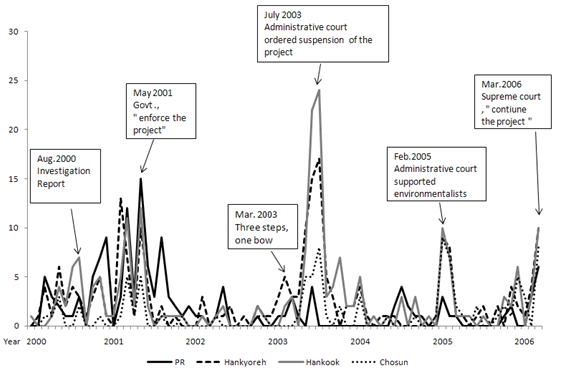Type the title of your article here
(Arial Bold, 20point)
Author Names* (Arial , 11point)
(Title, Department, University) (Arial, 7point)
Abstract
Please provide an abstract of 100-150 words here (Times New Roman, 9.5point).
Key words: provide 4-6 words (Arial Italic, 8.5point)
* Department, University, City, Country, Telephone number; Fax number; E-mail address
(Times New Roman, 8.5point)
Ⅰ. Introduction (Arial Bold, 13point)
1. Background (Times New Roman Bold, 12 point)
Education Reform. Education reform is one of the prevalent issues in most societies today. The effort to reform public schools is a norm for educators as well as outside reformers who want to develop a “world-class” workforce (Carnoy, 2000; Tyack & Cuban, 1995).
* Please use a normal, plan font (e.g. 11-point Century) for text and italics for emphasis. The manuscript should be double spaced.
Figure 1. Press Releases and News Coverage

II. Method (Arial Bold, 13point)
Sample and Data
Sample. The sample was selected from 30 school districts including 8 school districts
Table 1. Main attributes of anti and pro – development groups
References
Bertalanffy, L. (1972). The history and status of systems theory, The Academy of Management Journal, 15(4), 407-426.
American Psychological Association. (2010). Publication manual of the American Psychological Association (6thed.). Washington, D.C.: American Psychological Association.
Chubb, J. E., & Moe, T. M. (1990). Politics, markets, and America’s schools. Washington, D. C.: The Brookings Institute.
Cohen, D. K. (1996). Standards-based school reform: Policy, practices, and performance, In H. F. Ladd (Ed.),Holding schools accountable: Performance-based reform in education (pp. 99-127). Washington D.C.: The Brookings Institute.
National Education Association (NEA). (n.d.). Class size. Retrieved July 7, 2003, from NEA Web site: http://www.nea.org/classsize/.
Download File – Word_Template_Final
